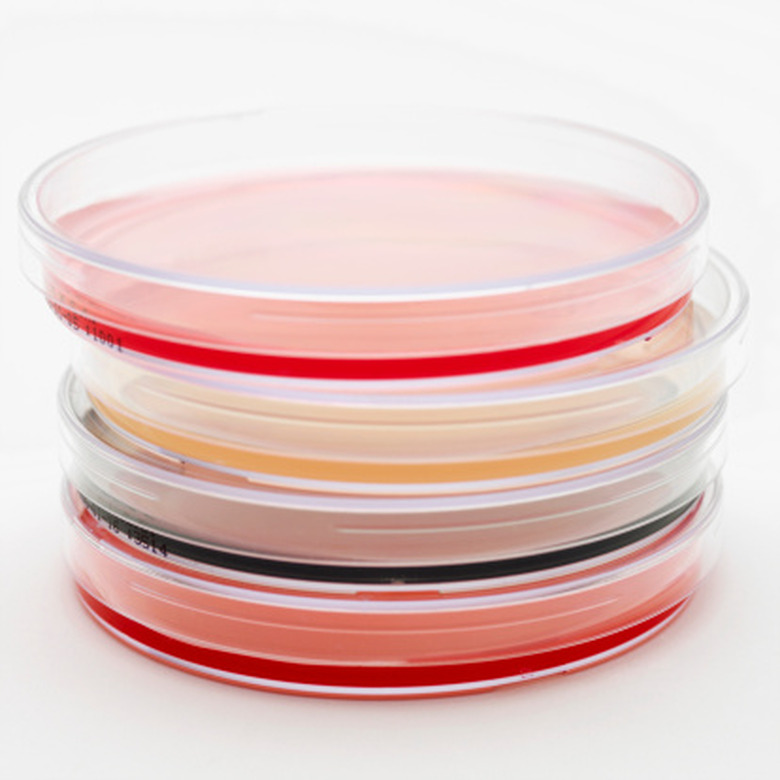Science Experiment: How To Make Lactic Acid
Lactic acid is formed by lactic fermentation of sugars. Lactic acid can also be synthesized in the laboratory. Most of the lactic acid formed in mammals is made by muscle tissue and red blood cells. When oxygen levels decrease, carbohydrate sugars breaks down into the by-product lactic acid. In addition, lactic acid can be made from sugars by bacteria or obtained from milk. Lactic acid bacteria produce lactic acid from carbohydrate fermentation and process into fermented food products, like yogurt and cheese.
Lactic acid producing bacteria
Step 1
Fill test tubes with screw tops with trypticase soy broth. Add 0.15 grams per liter of bromcresol purple to each test tube.
Step 2
Take a sterile toothpick or cotton swab and inoculate each of the test tubes with one of the following. One with scraping from your tooth plaque (use a toothpick to obtain the plaque), one with yogurt containing active cultures, one with sauerkraut. In addition, fill an empty test tube with whole milk and leave a tube of trypticase soy broth uninoculated as the control. Make sure you screw the caps on each of the test tubes tightly.
Step 3
Incubate the test tubes in an incubator at 37 degrees Celsius for 24 hours. Using your pH paper take pH measurements of uninoculated medium and milk for future comparison of data.
Step 4
Measure the pH of all inoculated tubes after incubation period using pH paper. Determine which test tubes resulted in the lowest pH level. The lower or more acidic the pH, the greater amount of lactic acid formed. The formation of lactic acid from lactic acid producing bacteria results in an acidic sour taste found in foods such as yogurt and cheese.
Step 5
Isolate lactic acid producing bacteria from the tubes using an inoculating needle and streaking method onto the agar plate. This will allow you to further confirm the presence of lactic acid by confirming the presence of lactic acid producing bacteria. Incubate agar plates for 24 hours. Lactic acid bacteria will form small colonies.Test for lactic acid bacteria using hydrogen peroxide. If no bubbles form, lactic acid bacteria are present.
Things Needed
- Sterile screw-cap tubes
- Trypticase soy broth
- bromcresol purple
- Pasteurized whole milk
- Sterile toothpicks
- Cotton swabs
- pH paper
- Trypticase soy agar plates with brom-cresol purple
- 3% Hydrogen Peroxide solution
- Inoculating needle
- Incubator
Cite This Article
MLA
Schafer, Dana. "Science Experiment: How To Make Lactic Acid" sciencing.com, https://www.sciencing.com/science-experiment-make-lactic-acid-8148316/. 24 April 2017.
APA
Schafer, Dana. (2017, April 24). Science Experiment: How To Make Lactic Acid. sciencing.com. Retrieved from https://www.sciencing.com/science-experiment-make-lactic-acid-8148316/
Chicago
Schafer, Dana. Science Experiment: How To Make Lactic Acid last modified August 30, 2022. https://www.sciencing.com/science-experiment-make-lactic-acid-8148316/
